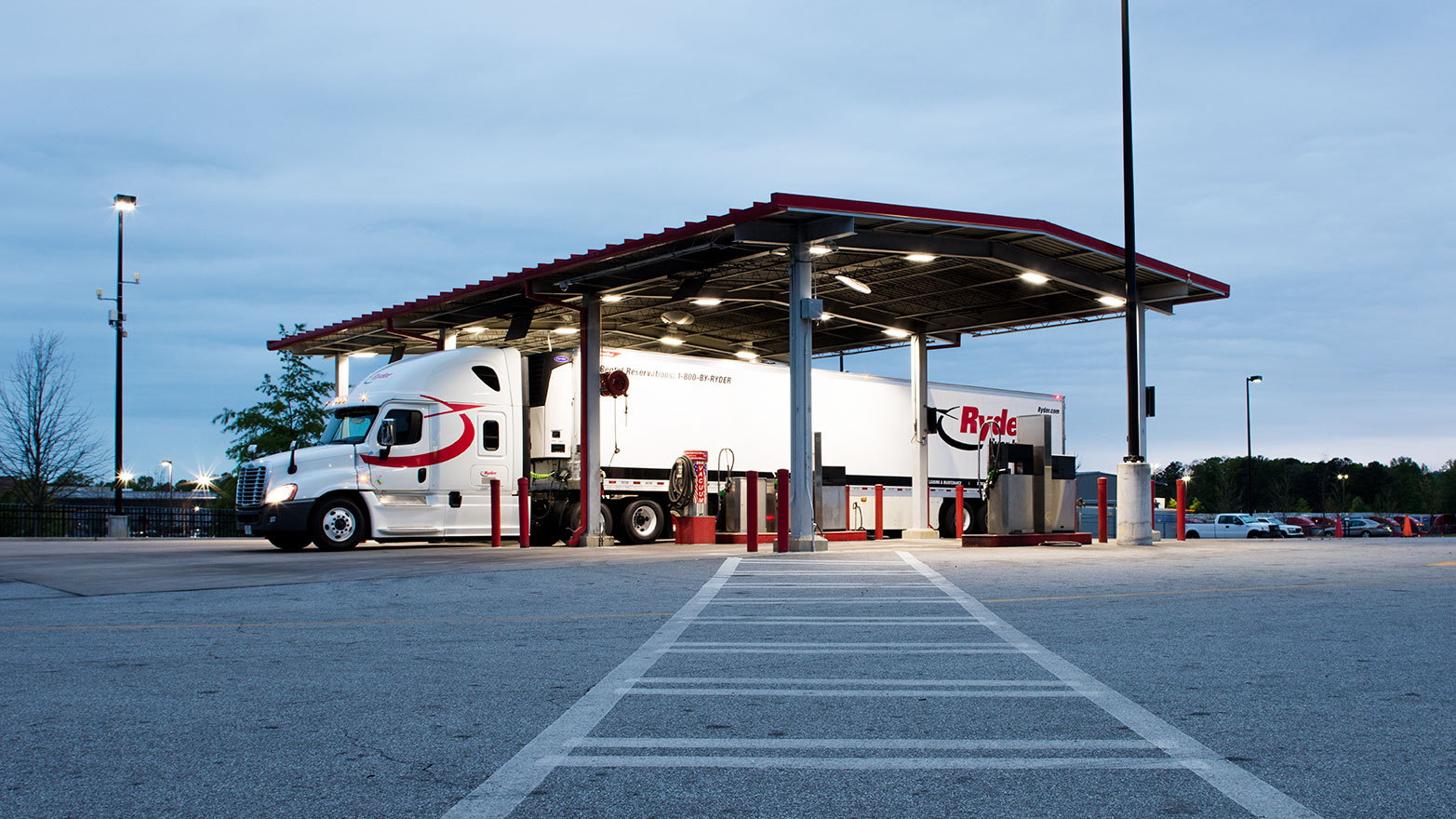Record surging fuel costs have some truckers teetering, especially among small and independent operators
U.S. average for trucking’s main fuel rises another 11.5 cents to $5.339 per gallon—as a freight market authority with a leading load board wonders what another string of increases would do to a volatile spot market and vulnerable small operators.

U.S. average for trucking’s main fuel rises another 11.5 cents to $5.339 per gallon
With the sustained climb in fuel prices to records this spring and summer, a market expert with a leading load board is warning that the bottom line for trucking is on the line — especially among small and independent operators — if the recent resumption of pump price increases turns into a longer trend.
For the second straight week, the U.S. average for trucking’s main fuel has surged by double digits. Retail diesel prices went up another 11.5 cents for the week of Oct. 17– following a 38.38-cent spike the week before.
Where any increases in fuel impact the freight industry most is the community of owner-operators and small carriers. They don’t enjoy the same fuel surcharges and negotiated prices on diesel that larger fleets do, said Brent Hutto, a 20-plus-year transportation and logistics professional and the chief relationship officer for Truckstop, the online load board and freight-rate negotiation portal that also is an aggregator of freight-market data and trends.
Diesel is $1.668 per gallon more than it was a year ago, according to the U.S. Energy Information Administration (EIA), which reports diesel and gasoline data weekly and by region. Motor club AAA, which releases prices daily, weekly and state-by-state, has the year-over-year number even higher: $1.746 more per gallon than this time in 2021. To the trucking industry, this data might be most worrisome because high diesel might by now have to be baked into the business models of fleets.
Hutto said many operators are “teetering” in these times of higher fuel prices and a “correcting” spot market.
Enjoying our insights?
Subscribe to our newsletter to keep up with the latest industry trends and developments.
Stay Informed“Efficiency of operation is really, really important. If you’re not getting better than 6.5 miles per gallon and not focusing on efficiency, you’re getting hammered,” Hutto said, adding that he has a friend in trucking who tries to keep his rigs at 10 to 10.5 miles per gallon with various technologies and his operations are better able to withstand fuel-price surges.
High fuel, falling spot rates: a gruesome twosome?

Diesel is $1.668 per gallon more than it was a year ago, according to the EIA.
Fuel-price surges affect “the bottom part of the market the most because they don’t recoup the fuel surcharges like other parts of the market,” Hutto said, adding that when the spot market enters a period of volatility and fluctuation — as it has this summer and fall — smaller operators are doubly harmed.
“Large fleets have extremely aggressive negotiation with truck-stop operators, but the owner-operators don’t. They kinda get hit at both ends.”
Spot rates are negotiated by the carrier and freight broker as one-time transactions, so fuel surcharges cannot be built in, where they can with long-standing freight contracts and in contracted rates. Spot rates represent the payments made to carriers by freight brokers, third-party logistics providers, and other transportation buyers. Contract rates are paid by the shipper directly to the carrier.
Hutto said Truckstop is bullish on the spot side, and Truckstop’s demand index is “balancing.” He added: “This is a market correcting itself back to its normal cycles.”
He noted that spot rates had dropped recently to as low as about $2.50 per mile from a high earlier this year of about $3.25, but were around $2.65 per mile on Oct. 17 on Truckstop.
Where diesel stands now—and where it might go

Diesel also was up for the week of Oct. 17 in every one of EIA’s regions of the U.S.
Diesel also was up for the week of Oct. 17 in every one of EIA’s regions of the U.S., according to its data. It was highest on the East Coast, where the fuel surged 22 cents to $5.35 per gallon.
The Gulf Coast saw the next largest increase, 12.1 cents to $5.018. Diesel rose 7.6 cents in the Midwest to $5.346 a gallon and 6.9 cents in the Rocky Mountain region to $5.268. The fuel was up the least for the week in typically the most expensive place to buy it, on the West Coast, where it ticked up 2.5 cents to almost $6 per gallon, $5.997.
Meanwhile, gasoline, which is about $1.50 cheaper per gallon than diesel and almost exclusively used by consumers and some commercial fleets, particularly work truckers with smaller vehicles, was down slightly — 4.1 cents to $3.871 per gallon — for the week of Oct. 17. Gas ticked down in most of EIA’s regions, except the East Coast and Gulf Coast.
The record increases in distillates this spring and summer were more easily attributed to high oil prices — as much as $120 per barrel on some markets compared to $85 on Oct. 17 — and Russia’s early spring invasion of Ukraine. Diesel rose 74.5 cents in one week after the invasion but peaked at $5.81 for the week of June 20, according to EIA. That was then followed by months of price declines.
High demand and lower supply also pushed prices higher earlier this year, but the last two weeks of increases, Oct. 10 and Oct. 17, are not as easily attributed, at least right now and not until more of a new trend develops.
In an Oct. 6 “explainer,” Reuters noted the decision a few weeks ago by OPEC, which includes Russia, to cut oil production by 2 million barrels a day impacted the oil markets, which in turn affected the diesel prices and gasoline. But the effect of the OPEC decision might be temporary, according to the same Reuters report, as the U.S. gooses crude production to compensate.
U.S. oil inventories are up, according to Oil & Gas Journal. Oil markets, according to another analysis, are returning to concern over a recession, which depresses the markets and might send fuel prices back down.



















